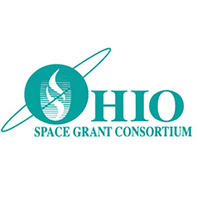Ohio Space Grant Consortium
Research Infrastructure Programs

The goal of the OSGC Research Infrastructure (RI) Program is to promote research interactions between OSGC faculty and students at Ohio universities, NASA Centers, Air Force Research Laboratory (AFRL), industry, and the Ohio Aerospace Institute (OAI) with scientists/engineers, and aerospace researchers. This will be accomplished through seed grants for young faculty to prepare them to compete for national awards. Proposals should demonstrate interest in STEM and promote research collaborations between OSGC faculty, hands-on student activities, collaborations with NASA Centers and AFRL, and industry. Grants that are matched with funds (cash or in-kind) from non-federal sources, and interaction with NASA Centers, AFRL, OAI, and industry are encouraged. All grant opportunities are open to U. S. citizens. Members of underrepresented minority (UM) groups, females, and persons with disabilities are especially encouraged to apply.
The types of grant opportunities are: 1) Faculty Research Initiation Grant Proposal (FRIGP), seed funding for untenured faculty to support new, innovative research; 2) Student-Innovative-Creative-Hands-on Project (SICHOP), aid in funding for undergraduate/graduate student hands-on projects (individual or group). Faculty mentor required.
All opportunities are posted on the OSGC website, and proposals may be completed and submitted online, or mailed to the OSGC Main Office. Proposals are reviewed and approved by the OSGC Director.
This project contributes to OSGC Goal 1, Develop a diverse STEM workforce in Ohio and the Nation (SMART Objs. 1.1, 1.2, 1.3, 1.4), OSGC Goal 2, Engage students and faculty in hands-on STEM research activities (SMART Objs. 2.1, 2.2, 2.3), and OSGC Goal 3, Support collaborative STEM research for Ohio faculty and students (SMART Objs. 3.1, 3.2, 3.3, 3.4). OSGC Research Infrastructure programs are advancing the Nations diverse STEM workforce pipeline through support of student/faculty hands-on research projects, real-world experiences, and engagement of students in NASAs missions. Research Infrastructure programs support the National SG Program goal to contribute to the Nations science enterprise, NASA current areas of emphasis and aligns with: NASAs Strategic Obj. 2.4; STEM Engagement LOB; Institutional Engagement LOB; API ED-18-1; and ACRA CoSTEM Report Obj. 4, Points 3-5.
Examples of OSGC-funded innovative STEM Research Infrastructure programs for FY2018 include: Miami University: Electrical Discharge Machining Induced Microstructural Changes and Its Effect on Fracture and Fatigue Properties of Ti-6A1-4V for Space Shuttle Applications; Ohio University: Investigation of Plasma Use in Rotating Detonation Wave Engines and Comparison of Bone Porosity, Diameter, Mineral Density, and Bending Stiffness as Indicators of Radius Strength; University of Cincinnati: CubeCats CubeSat Groundstation, Developing a Novel Trace Element Biosignature for Life on Ancient Earth and Mars, and Youngstown State University, Development of Continuously Reinforced Filament for 3D Printing. Continued work with Surveillance for Intelligent Emergency Response Robotic Aircraft (SIERRA), (University of Cincinnati).
The University of Cincinnati PI and Student PI designed a website for the Cincinnati Public Schools relating to fossils and the ancient Earth and Planets reaching multiple classrooms and students under their project Developing a Novel Trace Element Biosignature for Life on Ancient Earth and Mars
STEM student research was performed in Summer, 2018, under the direction of a faculty mentor at: Central State University (HBCU), Manufacturing Engineering Project (1 UM student); Wilberforce University (HBCU) collaborated with The University of Akron for the student to work in Professor Todd A. Blackledges lab researching How Does Spider Silk Adhere to Insect Cuticle? (1 UM female student).

